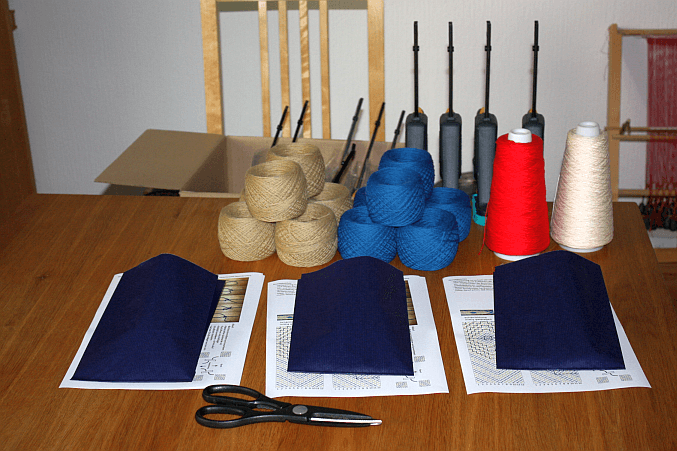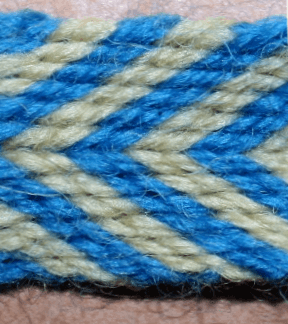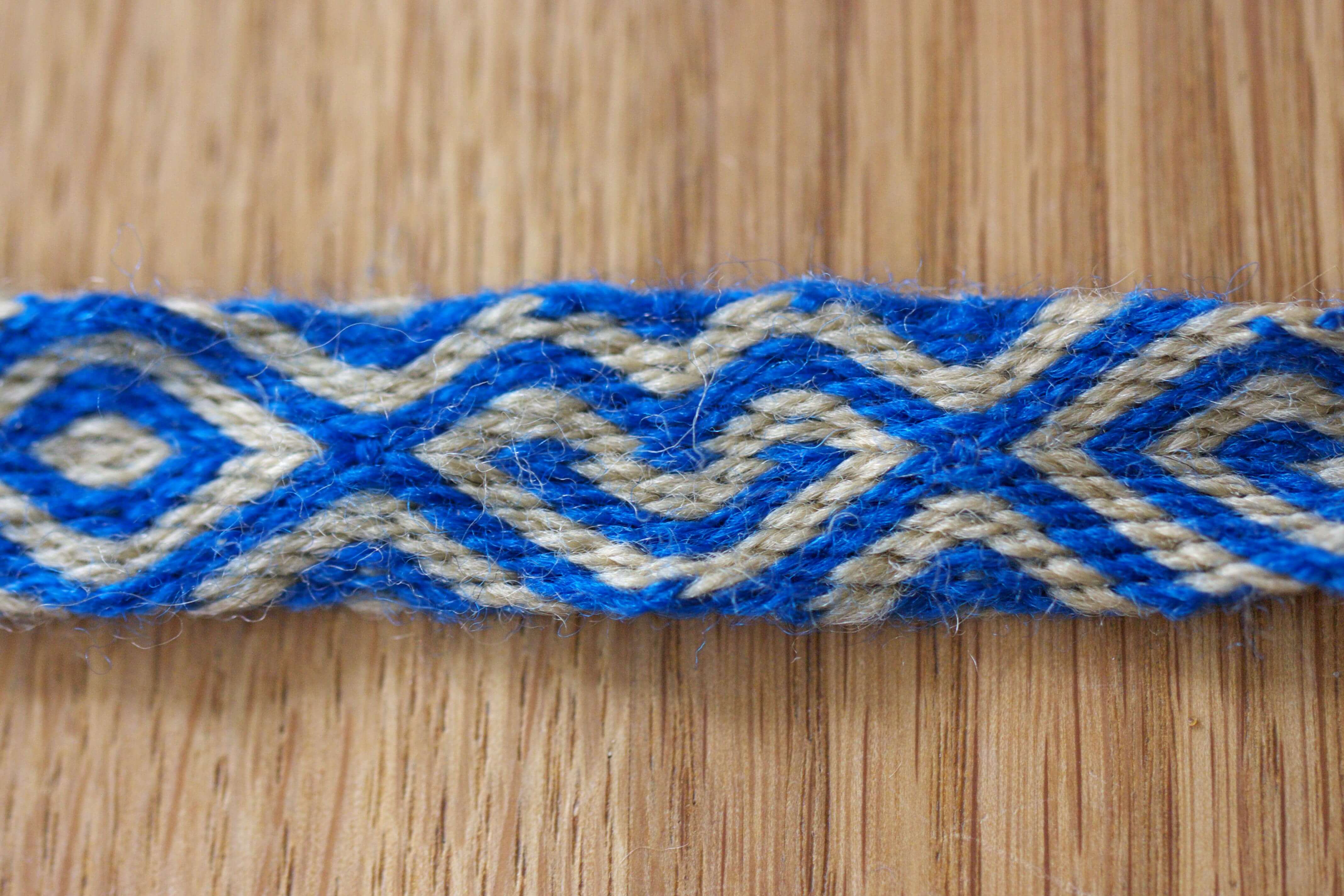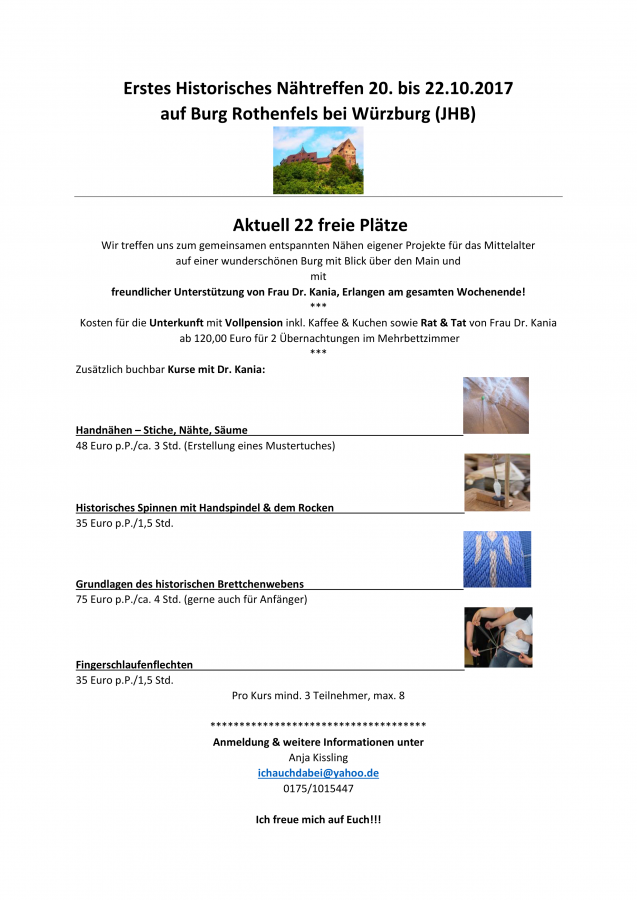I'm off to teach a full weekend's worth of workshops - spinning, tablet weaving, loopbraiding, and sewing techniques, and I'm all excitement.
Especially about the tablet weaving course. It's been so long in the "I would like to do this" stage, followed by a very long planning stage, and then, a while ago, the test run. Then some more smoothing of rough edges and planning and updating the plan and the printouts... and now it's going to get its first run out in the wild. Proof of this? A huge stack of stuff sitting in the car, waiting to be ferried off. This is by far the most material-intensive course that I teach, because I use clamps to set up the warps (mimicking the medieval tablet-weaving stands).
[caption id="attachment_3447" align="alignnone" width="902"]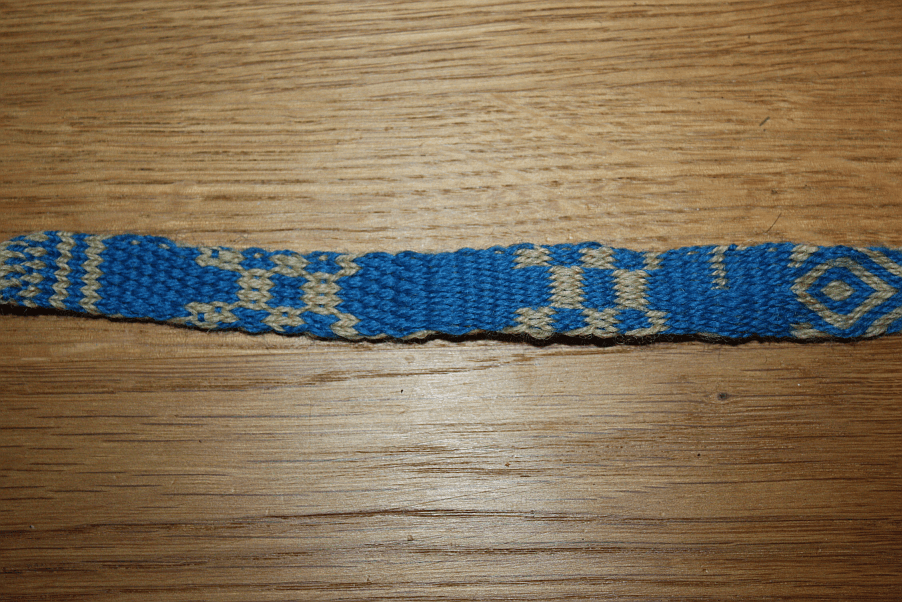 Starting off easy - a few straight lines, a bit of doubleface, getting an understanding of how things work.
Starting off easy - a few straight lines, a bit of doubleface, getting an understanding of how things work.
Since I'm currently also doing brain-bending exercises with free patterning, it's an especially nice feeling for me to be teaching a method that will allow the new weavers to do their own on-the-fly patterning, from a deep understanding on how these things work. At least that is my cunning plan - and the system I teach is quite robust in regard to mistakes, too.
Well. Let me put that a bit more into perspective. If you make a mistake, the system allows you to unweave the bad bits, then re-sort the tablets into their two packs as you un-weave the last correct pick that you made, then do the last pick again and work your way forward once more, hopefully correctly. You will not need a drawing or pattern draft to re-align tablets. You will need, however, patience and an adequate assortment of sighs, curses, or motivational beverages of choice, depending on your character. As always, the best thing is not to make the mistake in the first place...
[caption id="attachment_3446" align="alignnone" width="403"]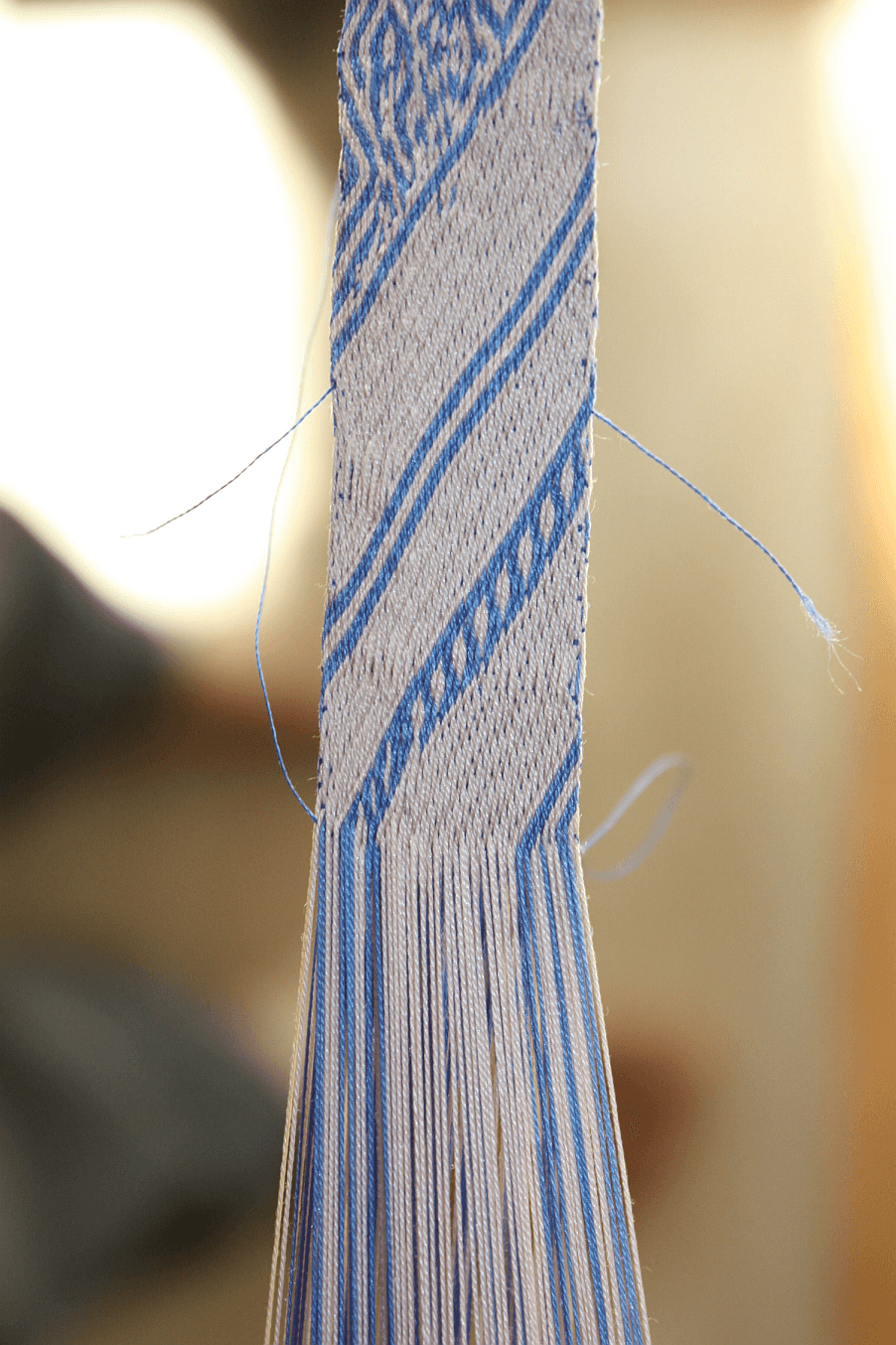 Speaking of the brain-bender, here's the current status. As you can see, I have done my best to try out how to deal with mistakes. Those, by the way, are mostly due to my weaving in the evening at the moment, when I'm already a bit tired... as a robust system should be up to a tired weaver, right?
Speaking of the brain-bender, here's the current status. As you can see, I have done my best to try out how to deal with mistakes. Those, by the way, are mostly due to my weaving in the evening at the moment, when I'm already a bit tired... as a robust system should be up to a tired weaver, right?
By the way, there will be a similar-ish workshop on patterning at the European Textile Forum, and due to last-minute cancellations, there are two spaces left once more...
Especially about the tablet weaving course. It's been so long in the "I would like to do this" stage, followed by a very long planning stage, and then, a while ago, the test run. Then some more smoothing of rough edges and planning and updating the plan and the printouts... and now it's going to get its first run out in the wild. Proof of this? A huge stack of stuff sitting in the car, waiting to be ferried off. This is by far the most material-intensive course that I teach, because I use clamps to set up the warps (mimicking the medieval tablet-weaving stands).
[caption id="attachment_3447" align="alignnone" width="902"]
 Starting off easy - a few straight lines, a bit of doubleface, getting an understanding of how things work.
Starting off easy - a few straight lines, a bit of doubleface, getting an understanding of how things work.Since I'm currently also doing brain-bending exercises with free patterning, it's an especially nice feeling for me to be teaching a method that will allow the new weavers to do their own on-the-fly patterning, from a deep understanding on how these things work. At least that is my cunning plan - and the system I teach is quite robust in regard to mistakes, too.
Well. Let me put that a bit more into perspective. If you make a mistake, the system allows you to unweave the bad bits, then re-sort the tablets into their two packs as you un-weave the last correct pick that you made, then do the last pick again and work your way forward once more, hopefully correctly. You will not need a drawing or pattern draft to re-align tablets. You will need, however, patience and an adequate assortment of sighs, curses, or motivational beverages of choice, depending on your character. As always, the best thing is not to make the mistake in the first place...
[caption id="attachment_3446" align="alignnone" width="403"]
 Speaking of the brain-bender, here's the current status. As you can see, I have done my best to try out how to deal with mistakes. Those, by the way, are mostly due to my weaving in the evening at the moment, when I'm already a bit tired... as a robust system should be up to a tired weaver, right?
Speaking of the brain-bender, here's the current status. As you can see, I have done my best to try out how to deal with mistakes. Those, by the way, are mostly due to my weaving in the evening at the moment, when I'm already a bit tired... as a robust system should be up to a tired weaver, right?By the way, there will be a similar-ish workshop on patterning at the European Textile Forum, and due to last-minute cancellations, there are two spaces left once more...




